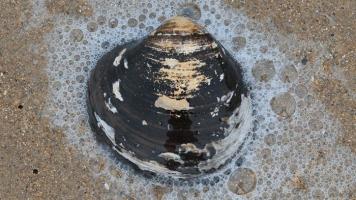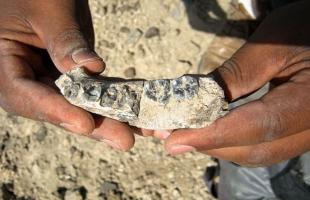Copy Link
Add to Bookmark
Report
Mead Lovers Digest #0406

Subject: Mead Lover's Digest #406, 17 May 1995
From: mead-request@talisman.com
Mead Lover's Digest #406 17 May 1995
Forum for Discussion of Mead Making and Consuming
Dick Dunn, Digest Janitor
Contents:
Bee-head. (Russell Mast)
Re: More 1st mead questions... (aging) (Joyce Miller)
Quick Meads ("Richard B. Webb")
Honey prices (IZZYYQ6@MVS.OAC.UCLA.EDU)
Heating/Nutrients/Mead Hangovers ("Harralson, Kirk")
Wood/aroma/buckwheat/lager (Richard Walker)
Cellaring (Richard Walker)
yeast in bottle (billy bob)
twist-off caps ("Matthew W. Bryson")
Re: oak barrels & paraffin (Lothar1@aol.com)
Hydromel (Dave Cushman)
Newbie - Sorta ("Harrington, Stephen J")
NOTE: Digest only appears when there is enough material to send one.
Send ONLY articles for the digest to mead@talisman.com.
Use mead-request@talisman.com for [un]subscribe/admin requests. When
subscribing, please include name and email address in body of message.
Digest archives and FAQ are available for anonymous ftp at ftp.stanford.edu
in pub/clubs/homebrew/mead.
----------------------------------------------------------------------
Subject: Bee-head.
From: Russell Mast <rmast@fnbc.com>
Date: Mon, 15 May 1995 09:54:37 -0500
> Subject: Help, I'm bee-headed
> From: ehlert@msuces.canr.msu.edu
> Have any of you had success recapping twist-off cap bottles? My success rate
> is about 1 in 3 with a double lever capper. I wa wondering if any of the
> other styles have better luck, or if I need different caps.
I got up to about 3 outta 5 with a double-lever. I have, by strange
coincidence, 2 double-lever cappers. One of them will eat these bottles
like candy, the other does fine. I was mostly brewing beer when I used
these, and many of the bottles ended up under-carbonated, even flat, with
these bottles. I gave up on twist-off bottles real fast.
Basically, you're better off using mason jars or old peanut jars if you can't
get your hands on real bottles. It's sort of too bad, they are plentiful,
but best to let the recycling truck have those, that they might be melted
down to a better form.
> Subject: Tupolo (sp?) Honey
> From: shank@biocserver.BIOC.CWRU.Edu (Sam Shank)
> I have briefly looked in the usual places for info on this, but found nothing.
>
> Can someone tell me what this stuff is? (I heard it in a VanMorrison song--
> She's as sweet as tupolo honey...)
Tupelo honey. It's a variety of honey, just like "clover" or "orange blossom".
I think "tupelo" is a flowering tree, but I'm not positive.
I think it was the title of a Hank Williams Sr. song, too.
It's been a southern tradition (yee-haw) for many years, and probably shows
up in a number of songs.
And no wonder - it's FANTASTIC. I lived in Nashville for a few years, and the
stuff was plentiful. I brewed a few one gallon batches, but since it can get
twice as expensive as other honeys, I never sprang for a full 5 gallons. I
now regret it, since it's harder to find in Chicago, and more expensive.
It's considered probabl ythe best tasting honey. It's a reasonably light
honey that, in my limited experience, matures quickly, but still has a full
flavor like a darker honey. (Not as much as buckwheat, and more delicate,
but definately not as subtle as light clover or light wildflower.)
> From: kevino@shore.net (Kevin Osborn)
> I personally haven't made a buckwheat honey (so far only a ginger mead and
> a maple mead in progress)
^^^^^
What recipe did you use? Where did you get it? How's it coming along so
far? I'm interested in a maple mead sometime soon and am curious what
proportions people have used and how they have turned out.
- -R
------------------------------
Subject: Re: More 1st mead questions... (aging)
From: jmiller@genome.wi.mit.edu (Joyce Miller)
Date: Mon, 15 May 1995 11:16:01 -0400
Q. How long to age?
A. It depends.
An annoying answer, but it really varies from batch to batch (I suspect it
mostly depends on the yeast used, but I have no hard evidence to support
this belief). Because of this, when bottling, I always make sure to do the
following:
1: Bottle a six-pack or two in competition-style bottles (brown 12-oz,
labels stripped off), in case it turns out *really* good!
2: Six to twelve "swing-top", or Grolsch-style bottles. One month after
bottling, I open one, pour a glass, try it, put the bottle in the fridge.
One month later, take it out of the fridge, pour another glass, etc. (so
that each test bottle lasts about 3 months). This way, I'm not dumping out
an entire bottle each month, and by trying it, the aging process trys my
patience less.
3: Everything else gets bottled in 22-oz bottles.
Joyce
------------------------------
Subject: Quick Meads
From: "Richard B. Webb" <rbw1271@appenine.ca.boeing.com>
Date: Mon, 15 May 1995 08:32:36 -0700
In MLD#405, Gerald Wirtz asks about how long to age a mead.
It seems to me that a few months ago, there was a post on how
to make mead in about the same amount of time that it takes to
make beer. Could somebody please search out the archives and
post this again? I deleted my copy a while back, and am most
unhappy for it...
>From: Gerald_Wirtz@vos.stratus.com
>Date: Fri, 12 May 95 7:09 EDT
> I've been getting VERY conflicting answers as to how long mead
>should take to age. Most books, and here as well, state that it takes
>months or even years. My friend at the brew store I frequent says that
>it should only take from 2 to 4 months from brewing to enjoying.
> My first batch was just a quick mead (3 gal H20 7.5 lbs honey)
> When should I expect to be able to enjoy this?
> Thanks (again) - Gerald Wirtz
Rich Webb
------------------------------
Subject: Honey prices
From: IZZYYQ6@MVS.OAC.UCLA.EDU
Date: Mon, 15 May 95 12:58 PDT
Two things: First, I wasn't planning on responding to the
honey price survey that someone asked about, but after seeing
a couple of responses indicating that people were paying under
a dollar a pound for honey, I just HAD to.
I live in Los Angeles, California, and so far have had no
luck finding any type of honey for under $1.10 a pound -- and
that's for cheap bulk Mesquite honey, which isn't bad, but has
a very strong flavor...And other types(ie. orange blossom,
sage, wildflower, etc.) range from $2 to $5 per pound! So, I too
would be extremely interested to find out who sells honey mail-order.
And, finally, I'd like to congratulate the person who said his
mead was getting stuck at something like 1.060 gravity -- for
having the courage to try 5 lbs honey per gallon. The first
mead I ever made was 6 lbs per gallon of must (total sg. of 1.225
or so), and ended at about 1.060. It was VERY sweet, but delicious
after only a total of 2 months(from the day I pitched the yeast to
the day I drank it). Of course, I couldn't walk after a couple of
glasses of the stuff...
------------------------------
Subject: Heating/Nutrients/Mead Hangovers
From: "Harralson, Kirk" <kwh@roadnet.ups.com>
Date: Mon, 15 May 95 17:54:45 EST
A more experienced mead maker told me that the need to pasteurize or
sulphite meads was a myth; that it was not necessary because honey has
certain natural preservative properties that keep it from spoiling.
Could this be correct? Most of my mead making information comes from
Papazian's first book, in which he recommends boiling for a short
time. If this is not necessary, I would prefer not to heat the must.
Secondly, do ale yeasts need the same kind and amount of nutrients
that wine yeasts do? I see people refer to the "Morse formula" for
nutrients. I don't have access to his book. Does anyone use this?
Comments? I was planning on using the dregs from the secondary of an
upcoming ale to ferment my next mead. It seems as if there would be
an abundance of nutrients in this. Do I still need to add more?
I found out the hard way that mead's reputation for hangovers is well
deserved. What makes the effects of mead different from beer and/or
wine?
Kirk Harralson
Bel Air, Maryland
------------------------------
From: Mark Taratoot <taratoot@PEAK.ORG>
Message-Id: <199505152255.PAA24006@PEAK.ORG>
Subject: tupelo
To: mead@talisman.com (Mead Lovers Digest)
Date: Mon, 15 May 1995 15:55:55 -0700 (PDT)
X-Mailer: ELM [version 2.4 PL23]
Mime-Version: 1.0
Content-Type: text/plain; charset=US-ASCII
Content-Transfer-Encoding: 7bit
Content-Length: 394
Hi.
Sam Shank asks about being "sweet as tupelo honey."
Tupelo is a tree. My failing memory tells me the latin name is Nyssa
sylvatica, and the common names are black gum and water tupelo. I have
never tried honey from tupelo flowers, but it sure must be sweet, or else
there was some poetic license going on. Hope this helps, or at least
confuses things furter.
peace
m. taratoot
------------------------------
Subject: Wood/aroma/buckwheat/lager
From: rwalker@twics.com (Richard Walker)
Date: Tue, 16 May 1995 18:57:37 +0900
WOOD
Russell Mast <rmast@fnbc.com> writes:
>Alternately, with oak chips you can brew an "oak chip tea" by boiling the oak
>chips in some water. Then, you taste the tea, and decide from the strength
>of it about how much of that you'd want in the mead, and pour it on in.
>This allows you much more control over the flavor contribution than just
>tossing them in.
Another idea kicking around in my head is to soak them in grain alcohol and
make an extract that can be added a little at a time until I like the
result.
Daniel S McConnell writes:
>Another idea is to soak oak chips in a small amount of mead (1-2L?)
>and then blend this intensely oaky mead back into the main batch,
>adjusting for taste. Do this over several days to prevent mead-influenced
>decisions. This is a technique used by some professional wineries to
>add oak flavor without the hassle of barrel maintenance.
Your idea would seem best of all because it provides control while
eliminating the addition of extra water or alcohol, neither of which would
presumably be desired. I have do have a small practical consideration,
though: how do you eliminate the 1-2 liter gap at the top of your carboy
while the oaking is in progress? I would assume leaving it as is would be a
source of undesired oxygen, or am I being overly fussy?
Anyway, as soon as the chips arrive, I plan to go for it and see what the
result is. I think I'll probably start with the wee-wee smelling chestnut
mead in the hopes that the oak might mask some of the odor and on the
assumption that it is going to have to be aged for a looong time
regardless.
Which brings us to,
AROMA
Daniel S McConnell writes:
>I wonder if this is not the chestnut contribution. Do other people pick
>up the same aroma association?
You may be right. So far, only two other people have been privileged to try
it, my wife and one of her friends. My wife just crinkled up her nose and
said, "Yuck! Too much chestnut." The friend, ever diplomatic, said, "This
would probably be an unusual and outstanding beverage if you liked
chestnuts," which translates as, "This is horrid. Please do not call me
again until you've got another batch of that lovely peach wine you made
last year ready."
The problem is, the taste and body strike me as some of the best I've ever
produced. Just that damned nose. I've never been a big fan of chestnuts, so
the aroma does not immediately register with me. My association remains,
alas, "fresh pee." Maybe the lesson here is to be careful when using honeys
that come from things don't like, no matter how much you may like the honey
itself, as I so admirably advise in my next comment.
BUCKWHEAT:
The only thing I have to add to the discussion about buckwheat mead is to
be very sure that buckwheat itself is something you like. My experience is
that this is one mead that makes no secret about its origins.
If you can get a hold of them, Japanese "soba" buckwheat noodles are an
excellent way to gain a glimpse into what buckwheat honey will be like when
all the sweetness is gone. They don't contain the sugar that buckwheat
pancakes do, nor is the buckwheat component masked by other flavors as it
would be in bread. If you like soba, you'll be pleased with your buckwheat
mead. If not, you might want to reconsider.
LAGER YEAST
I brewed a light mead/fake beer sort of thing last fall using honey,
ginger, hops, and Red Star lager yeast. It ended up with about 5% alcohol,
and was primed and left to age in a cold mountain cabin over the winter.
Just opened my first bottles last weekend and my impression is that it's
all right but nothing special. On the positive side, it's very refreshing
and easy to drink. On the down side, it reminds me a bit too much of
Budweiser ...
All of which is to say that if you use appropriate handling -- maintain
cool temperatures and age a bit -- lager yeast will ferment your honey for
you just fine, but whether there is any benefit to doing so is another
matter. This particular mead is not something I'm planning on repeating and
I can't say that using lager yeast contributed anything of interest, but it
didn't turn out horrible either, which is I guess something in its favor.
Richard Walker
Yokohama, Japan
Of course my opinions reflect those of the company.
I AM the company.
------------------------------
Subject: Cellaring
From: rwalker@twics.com (Richard Walker)
Date: Tue, 16 May 1995 18:57:54 +0900
Sorry to monopolize the conversation, but can anybody recommend books or
electronic sources of information on building home wine/mead cellars? I've
got the place picked out, but would like some idea on how it should be
insulated and designed.
Alternatively, does anyone use those "wine cave" refrigerators? Or regular
old refrigerators? Or do you just take whatever temperature fluctuations
come your way and hope for the best?
Richard Walker
Yokohama, Japan
Of course my opinions reflect those of the company.
I AM the company.
------------------------------
Subject: yeast in bottle
From: billybob@cpcn.com (billy bob)
Date: Tue, 16 May 1995 09:12:59 -0400
I have just bottled my first mead. I have let the yeast settle out of
the mead in the bottle, so there is yeast sediment just covering the
bottom of the bottle. My question is How will this affect the aging
process? Should I worry about a yeasty tasting mead when it's ready to
drink? Am I just being overly cautious?
Thanks for the help. Mike Green billybob@cpcn.com
------------------------------
Subject: twist-off caps
From: "Matthew W. Bryson" <MWBryson@lanmail.rmc.com>
Date: Tue, 16 May 95 9:15:27 EDT
I used mainly twist-off bottles to cap for my first few batches before
I was told that they probably would not work; immediately, all of my
previously well-sealed bottles lost their seal. It's kind of like
believing in magic.
Seriously, though, if you want to use twist-off bottles, you should
probably look for thinner bottle caps made for twist-off bottles to help
promote a tighter seal. For myself, I've never bothered, using a
combination of twist-offs and non-twists, and pretty much all of my
bottles keep pressure just fine. I do find, however, that the twist-offs
do tend to break more often than other bottles during capping. Not often,
probably about once every 35-40 bottles.
These opinions of mine are based solely on my experience. YMMV.
Duke Nukem
------------------------------
Subject: Re: oak barrels & paraffin
From: Lothar1@aol.com
Date: Tue, 16 May 1995 13:32:21 -0400
From: wolf@netheaven.com (Karst)
Date: Fri, 12 May 1995 11:45:34 -0500
Robert Lamothe wrote:
> Jas. Townsend and Son is a retailer of clothing and supplies for
>re-enacters. They have barrels ranging from 3 gallon to 10 gallon, all
>are white oak and lined with paraffin, spigot holes drilled on request.
Wolfram von Kiparski replied
> Doesn't the paraffin lining defeat the purpose of using a white oak barrel?
> To get a oak character in mead, the mead must be in contact with the wood.
> IMHO, these barrels are useless for imparting an oak character to one's
> mead.
The paraffin does defeat the purpose of using an oak barrel, but it is easy
to remove. Just fill the barrel about 3/4 full with boiling water, this melts
the wax, then let it cool. The wax will float on the water after it melts and
can be broken up after it cools. Just shove a screwdriver thru the bunghole,
to break the wax, drain the water then toss in a short length of heavy chain
(about 1 foot) and rool the barrel around. Dump out the wax chips and repeat
the process 2 or 3 times (to get the wax off of the entire inside surface).
One advantage of using these barrels is that they don't need to be kept full
of liquid to keep them meadtight, there will be some remaining paraffin
between the staves which seems to keep it sealed.
I have a 2 gallon barrel that wax paraffinned and keep it dry most of the
year. It never leaks whenever I fill it.
Alex.
------------------------------
Subject: Hydromel
From: Dave Cushman <76463.2461@compuserve.com>
Date: 16 May 95 16:25:39 EDT
Neil Flatter asked what hydromel is in #405. Roger Morse, in his
book "Making Mead", defines hydromel as a "weak (watered) mead". In
other historical writings (Kenelme Digby "The Closet..." and Robert
Gayre "Wassail...") recipes and descriptions of hydromel suggest a
that is more beer/cider strength. For myself, I make "hydromel"
to fall between 6 and 8 percent (apparent) alcohol.
I have several wine strength meads and melomels which are
cellaring in the bottle from ages 2 to 5 years. The problem is
that on one hand I really want to savor the good old brew,
but on the other hand I really want to drink mead daily.
Hence, the lighter and quicker hydromels.
I hope I won't offend any purists by saying that I am considering
moving to 15 gallon brew kettle/fermenter configuration, then
aging the mead in corny kegs for 2-3 months prior to serving.
This doesn't mean no more stronger meads! Hopefully, with
more quick-brew available, I won't be tempted by the mead
worthy of long aging ;-)
Thanks
Dave Cushman
------------------------------
Subject: Newbie - Sorta
From: "Harrington, Stephen J" <sharrington@msmail4.hac.com>
Date: 17 May 1995 11:39:14 -0800
I am an experienced homebrewer of beer (all-grain), and I thought it might be
fun to try making mead. I was wondering if there were others who had done the
same and might have some advice on some of the differences which might escape
me otherwise.
Also, whenever a new person asks me for a recipe, I give them a standard
extract pale ale recipe to start with. Can anyone point me in the direction
of a similiar 'newbie' mead recipe?
Thanks,
Stephen Harrington
Manhattan Beach, CA
------------------------------
End of Mead Lover's Digest #406
*******************************
























